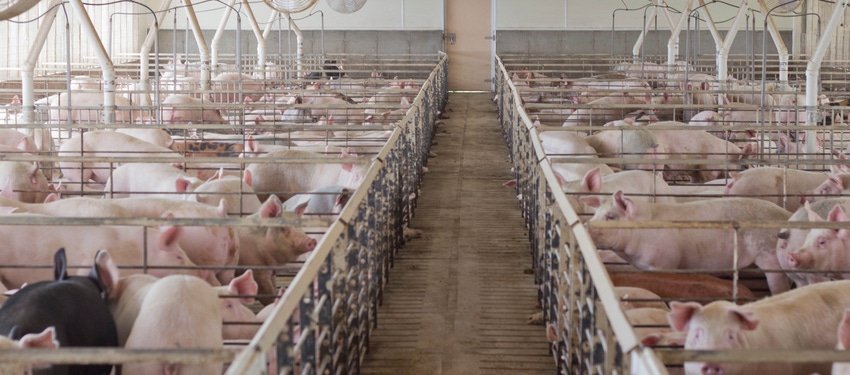Net energy may help lower cost of hog production
One way to propel efficiency of net energy is harnessing power of purified amino acids.
July 2, 2020

In swine nutrition, net energy diet formulation may hold the promise of reducing the cost of production, according to Ralco Nutrition. When formulated correctly, net energy-based swine diets can decrease feed costs and increase gain.
According to an announcement from Ralco, at the core of net energy formulation is the concept of building diets that minimize the energy wasted during the digestion process. Although this seems like a simple idea, most U.S. swine diets are formulated based on metabolizable energy, which does not account for energy burned or lost during the digestion process. Net energy assigns feed components an energy value that corresponds to the energy available for the animal to put toward production after digestion, Ralco said.
“Net energy is a different approach to formulating diets,” said Dr. Russell Fent, director of the swine technical group at Ralco. “Weight gain, not weight loss, is the focus of a net energy formulation. Putting lean weight on hogs requires efficient energy utilization and easy-to-digest amino acids and avoiding excess protein.”
Ralco has built a proprietary approach to building swine diets in which it uses "several tools to maximize the net energy in feed by minimizing the energy wasted during the digestion process,” Fent said.
During the development of its system, Ralco explored, researched and fine-tuned many feed components that allowed it to take advantage of the net energy concept, according to the announcement. One way to propel the efficiency of net energy is harnessing the power of purified amino acids. Purified amino acids accomplish this without the wasted energy and digestive stress that come with excessive soybean meal, the company said.
“The idea of net energy becomes a reality when building a ration upon a blend of purified amino acids. The more we understand the relationship between purified amino acids and energy absorption, the further we can push net energy diets,” Ralco senior swine technical adviser Dr. Jim Hedges said.
Hedges explained that essential, purified amino acids — not proteins — are required for the best feed gain.
“A crude protein, like soybean meal, contains as many as 20 amino acids. Most of these are in serious excess of what the pig needs. Pigs will waste quite a bit of energy breaking down the excess amino acids they do need, which also causes them to consume more water to excrete excess nitrogen, whereas purified amino acids, like lysine, provide pigs with an essential amino acid that is quickly absorbed and can more readily meet their daily nutritional requirements,” Hedges said.
Heat stress
Energy wasted during digestion is known as the heat increment, which is the result of unnecessary energy being “burned” during the digestive process. Diets that reduce the heat increment allow for “cooler” digestion inside the animal, Ralco said.
“Pigs already have a tough time keeping cool. Feeding a low-protein diet reduces production waste. It also reduces body heat generated as a pig’s body works to digest soybean meal. During summer, this can have a big impact on feed intake,” Hedges said.
You May Also Like


.png?width=300&auto=webp&quality=80&disable=upscale)
